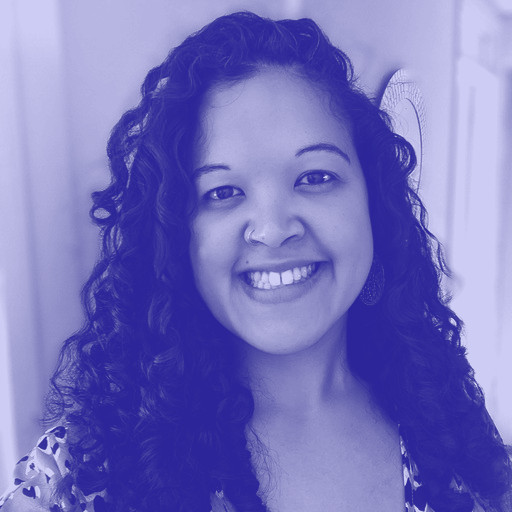I attended the UX Scotland event at Dynamic Earth, Edinburgh, in June 2023, and took away some great learnings about UX, conferences – and myself.
Between conversations with fascinating people, talking about everything from diversity in UX to Die Hard, I felt hyper-aware of every aspect of the experience itself.
That’s probably because it’s been a while since I attend an in-person conference. In some ways, it felt like a totally new experience. Or, at least, one I was seeing with fresh eyes.
1. In-person events can be exciting and anxiety inducing
On the train up from Glasgow to Edinburgh, I felt both:
- excited to meet people and engage with some exciting talks
- anxious that I’d forgotten the etiquette of how to network with a room full of strangers.
Luckily, my nerves faded away when I arrived at the event and was greeted by warm and friendly faces at the registration desk.
It also helped me remember that we’ve all had to readjust to in-person engagements and it’s not necessarily easy to just ‘go back to the way things were’. This is a post-pandemic world, whether we like it or not.
2. Simple registration removes unnecessary barriers
As a service designer the simplicity of the registration desk surprised and delighted me.
You just gave your name to a friendly human and out came your badge and physical programme from an alphabetically organised box.
There was no fancy app to download ahead of time, no digging through your email for a QR code, no trying to connect to a Wi-Fi, and no pointless printing of tickets ahead of time.
More of this please!
3. It’s fun to be a participant instead of facilitating
As a practitioner, I very rarely finish a work week without having delivered at least one workshop.
I love workshops, as I find the opportunity to interact with others and share different perspectives both fun and fascinating.
Sadly, though, I don’t often get the chance to be an attendee. So, it was refreshing to be on the other side of the table for a change.
4. Storytelling is a great tool for showcasing digital solutions
It’s not often that Die Hard and Shaun of the Dead come up in a conversation about demoing new products, services or functionality to a client or your team.
But then again, it’s not surprising they did in a workshop led by self-confessed cinephile Jonathan Waldheim-Ross, Head of Service at NHS Education for Scotland.
We shared success stories and battle scars from demos we’ve seen and delivered.
We discussed different techniques, from the ‘results chain’ to the hero’s journey.
And we spoke about borrowing techniques such as story arcs and Chekhov's gun from theatre and film.
There were loads of great techniques I’ll be looking to introduce into my demos in future.
5. Room for vulnerability means better, more inclusive design
I was blown away by the closing keynote on day one of the event.
Heldiney Pereira, Lead Product Designer at Monzo and a Director at Samaritans, shared a brave and emotional account of his journey into UX.
There were so many themes that resonated with me, from nurturing diverse perspectives and facilitating play, to the importance of making room for feelings and transparent communication.
6. Building and nurturing communities is a smart investment
I also enjoyed listening to the opening keynote from Kara Kane, Head of Profession for Design, Government Digital Service (GDS), talk about communities of practice. She argued that they can make your work and working life better.
This made me reflect on the different communities I’ve been a part of building and contributed to, from online communities for a global entrepreneurship network at Youth Business International to digital projects in the Tech for Good community, to the new community of practitioners at SPARCK.
I was lucky to spend the day with some of my colleagues from SPARCK, including Jonas Gentle, Le'Anne Whiteford, Miriam Vaswani and Anne Dhir. It reminded me of the value of community and how often we fail to find the time and make the effort to nurture human connections. But we really should, given the value they offer individuals and organisations.
7. Representation matters, especially in design
It’s not often you hear a black designer speak at a large-scale conference, let alone in a keynote slot.
That’s why I found it so refreshing to hear from someone like Heldiney at UX Scotland.
I’ve been to many design events and conferences and heard loads of different talks by inspirational people, but the lack of diversity within the field has always been something that’s troubled me.
It’s one of the reasons why, for a long time, I, as an immigrant woman of colour, felt it was a space where I didn’t belong.
There have been some great initiatives recently designed to address this lack of representation within the sector, such as the Black Design Guild and WATBD. But there’s still more work to be done – and we can all play a part.
Find out more
If you’re Interested in learning more about some of the talks mentioned in this blog, check them out here:
- Community power: How communities of practice can make your work and working life better | Kara Kane
- Don’t do a demo: storytelling your way to success | Jonathan Waldheim-Ross
- Designing a high-performing and inclusive team | Heldiney Pereira



